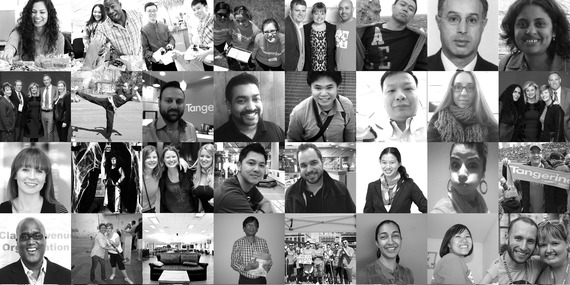Open enrollment periods usually run for a few weeks between September and November in most workplaces. This yearly event, usually administered by the human resources department at most employers, allows you and your fellow employees to review past benefits choices, ask questions and make selections on health and related insurance products, retirement plans and other elective perks and discounts including transportation credits and tuition reimbursement.
The reality is that many employees make decisions too quickly or forget to address key personal needs in their selections. In fact, a recent survey by insurer Aflac says that 90 percent of Americans choose the same benefits year after year and that 42 percent forego up to $750 annually by making choices that don't fit their needs.
However, rushed or poor choices in insurance, retirement or other workplace-based benefits are part of a bigger story. Open enrollment is the smaller companion to self-directed savings and investment choices you should be making outside the workplace. Many employers are looking to shrink or discontinue the retirement and health benefits they offer, making it necessary for employees to focus on personal planning more than ever.
As open enrollment approaches at your workplace, here are some mistakes you might want to avoid:
- Thinking open enrollment is the only financial planning you need to do. Your company may offer excellent retirement, healthcare, education and insurance benefits now. But given that the average worker tenure at U.S. companies is only 4.6 years, the biggest open enrollment mistake might be a lack of independent financial planning and personal savings and investment. Whether or not you work with a qualified financial advisor, most Americans need to save and invest independently from employer-sponsored plans. Qualified advisors can evaluate individual financial, lifestyle and tax circumstances and help clients select employer-based investments and benefits to complement what they're doing on their own.
- Failing to read and prepare for open enrollment. Open enrollment dates can creep up on you. If your open enrollment period occurs at the same time every year, mark your calendar a few weeks ahead so you can start thinking and getting advice on benefits for the coming year. Choosing benefits is an important financial decision; make the right amount of time to review options.
- Forgetting to coordinate benefits with your spouse or partner. Two-income families -- particularly those with kids -- might schedule a bit more time to compare benefits they're entitled to separately or together. While the Patient Protection and Affordable Care Act (ACA) lets parents keep children on their health plans until age 26, more employers are instituting "spousal surcharges" or excluding spousal coverage altogether if spouses already have access to employer health insurance. According to Towers Watson, by 2017, 63 percent of employer plans will block spouses who have their own employer coverage or add surcharges that can range from $500 to $3,000 a year.
- Ignoring your state's Health Insurance Marketplace. Circumstances change, so if you lose a job or find it too expensive to stay on your spouse or partner's health plan, familiarize yourself with your state's ACA-mandated health insurance marketplace as one of your potential health coverage options.
- Forgetting to evaluate how big life events might affect your benefits. Major life events can become financial events very quickly. Pay raises or cuts, a spouse/partner getting or losing a job, marriage, divorce, serious illness or starting a family require a benefits checkup, preferably well in advance of open enrollment. Think through every potential situation you and your family might face and ask questions about how those changes might affect your benefit selections.
- Ignoring flexible spending accounts (FSAs) and health savings accounts (HSAs). FSAs are workplace-based accounts that allow you to set aside money on a pre-tax basis to help you pay for healthcare and dependent care expenses during the calendar year. HSAs, if you qualify, also allow you to set aside pre-tax dollars in a qualified investment or savings account for long-and-short term medical expenses not covered by insurance. HSAs don't require you to spend out those funds every year. Your workplace benefits counselor, qualified financial advisor and Internal Revenue Service Publication 969 can outline eligibility, types of accounts, contribution limits and tax issues associated with these choices.
- Leaving retirement selections unchanged. As the Aflac data indicates, many people don't change their investment choices in self-directed retirement plans for years. Many also make uninformed choices that are too aggressive or conservative for their needs. Reviewing employer-based retirement options annually against personal savings and investments is essential.
- Brushing off wellness options. Many employers pay for exercise, cholesterol screenings, weight loss, smoking cessation, immunizations or related benefits that can make you healthier and possibly lower your healthcare premiums.
- Bypassing transportation breaks. If you drive or take public or company-sponsored transportation to and from work, you may qualify for specific discounts or tax deductions. Check IRS Publication 15-B for the latest information on such programs and how to use them most efficiently.
- Forgetting education benefits. If an employer is willing to train you to advance in your career, don't ignore the opportunity, but keep an eye on any potential tax liability for those benefits. Also, don't forget employer-sponsored grant or scholarship awards for you or your kids -- that can be free money.
Bottom line: Open enrollment is much more than a rush to fill out insurance forms every year. Do your homework or consult a professional before making these important choices for health, retirement and other key employee benefits that impact your overall budget.
Nathaniel Sillin directs Visa's financial education programs. To follow Practical Money Skills on Twitter: www.twitter.com/PracticalMoney
-- This feed and its contents are the property of The Huffington Post, and use is subject to our terms. It may be used for personal consumption, but may not be distributed on a website.
































